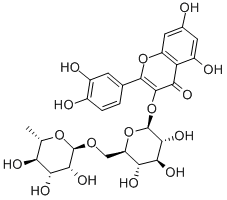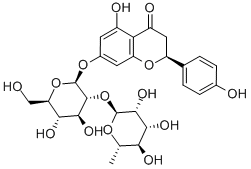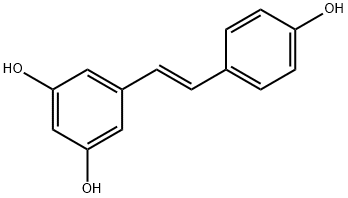Amentoflavone , 10mMinDMSO , 1617-53-4
Synonym(s):
Didemethyl-ginkgetin;I3′,II8-Biapigenin;Tridemethylsciadopitysin
| Pack Size | Price | Stock | Quantity |
| 1ml | RMB476.00 | In Stock |
|
| others | Enquire |
PRODUCT Properties
| Melting point: | >300°C (dec.) |
| Boiling point: | 910.5±65.0 °C(Predicted) |
| Density | 1.656±0.06 g/cm3(Predicted) |
| storage temp. | Inert atmosphere,2-8°C |
| solubility | DMSO (Slightly), Methanol (Slightly, Heated), Pyridine (Slightly) |
| pka | 6.01±0.40(Predicted) |
| form | Solid |
| color | Yellow |
| BRN | 380244 |
| InChIKey | YUSWMAULDXZHPY-UHFFFAOYSA-N |
| SMILES | C1(C2=CC=C(O)C=C2)OC2=C(C3=CC(C4OC5=CC(O)=CC(O)=C5C(=O)C=4)=CC=C3O)C(O)=CC(O)=C2C(=O)C=1 |
| LogP | 3.492 (est) |
| CAS DataBase Reference | 1617-53-4(CAS DataBase Reference) |
Description and Uses
Amentoflavone is a biflavonoid originally isolated from Selaginella. It has a wide variety of biological effects including antibacterial, antioxidant, antiviral, antidiabetic, and neuroprotective activities. Amentoflavone has antiviral activity against the influenza A subtypes H1N1 and H3N2, influenza B, and herpes simplex virus 1 (EC50s = 3.1 and 4.3, 0.56, and 17.9 μg/ml, respectively). It has antidiabetic effects such that it dose-dependently increases insulin receptor phosphorylation and activation and inhibits hydrolysis of p-nitrophenyl phosphate (p-NPP) catalyzed by protein tyrosine phosphatase 1B (PTP1B; IC50 = 7.3 μM). Amentoflavone reduces the time mice spend immobile in the forced swim test, a measure of antidepressant efficacy, in a dose-dependent manner.
Amentoflavone, is isolated from an Et acetate ext. of the whole plant of Selaginella tamariscina. It has been shown to have antitumor activity, such as mitochondria-mediated apoptotic cell death. Amentoflavone can interact with many medications by being a potent inhibitor of CYP3A4 and CYP2C9, which are enzymes responsible for the metabolism of some drugs in the body.





